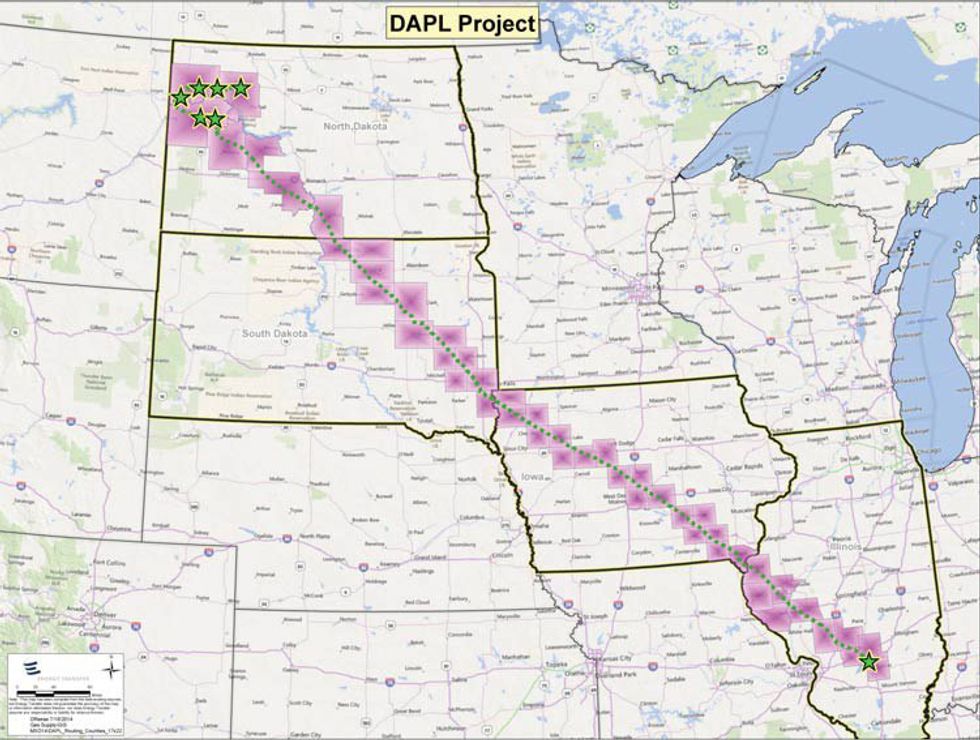In the past year, Dakota Sioux Native Americans have been protesting the Dakota Access Pipeline, which would run extracted oil through their reservation. What originally was a local protest has turned into an internationally recognized problem. People from all over are flocking to Standing Rock to support the Sioux tribe. Most recently, people have been using Facebook check-in to show a sign of support no matter where they actually are. For people who need to be in the know, here is the who, what, where, why and how about the Standing Rock Sioux-Dakota Access Pipeline Protest.
What is happening?
In July, the North Dakota Standing Rock Sioux tribe filed a lawsuit against the pipeline. The lawsuit went to trial, and part of the pipeline was stopped — the part that crossed the Missouri River — but didn't stop any other part because the judge deemed it safe and the company wasn't breaking any laws by putting in the pipeline.
Since then, thousands of people have flocked to North Dakota to show support for the tribe's rights. People from all corners of the U.S. and from different countries as well. Most recently, the Māori, native people of New Zealand, have shown their support of the Sioux. The company producing the pipeline has halted production, but tension is still high because of the impending disaster.
Who is involved?
The North Dakota Standing Rock Sioux Tribe is the main party protesting the Dakota Access Pipeline. This project would cut across several miles of the reservation and would damage the environment surrounding it.
The company who is putting the pipeline in is called Energy Transfer Partners, a national company who is based in Dallas, Texas, according to this New York Times article. This company has claimed to have already lost $1.4 billion because of the halt in construction due to protests.
Where is it?
The protests are mainly centered in Standing Rock Reservation in North Dakota, but the pipeline is slated to run over 1,100 miles through four states — North Dakota, South Dakota, Iowa and Illinois.

When is it happening?
The projected pipeline calendar, according to ETP's website, was set to be completed and running in late 2016. Being as it is November and the process has been halted, my prediction is that if it ever is finished, it will be late summer of 2017. The company has not updated their website or calendar.
Why?
The pipeline is predicted to increase revenue and the economy by using in-house oil and start using less foreign oil. The projected tax revenue on the lands would be $1.3 million, according to the website. It would bring money into the local and state economy and create thousands of jobs for people across these states.
The pipeline is also predicted to go under key water sources and sacred grounds that are part of the reservation. If the pipeline were to leak, it would destroy the Missouri River and the environment that is supported by it —including thousands of people.
How can you help?
While the protest is gaining more momentum because of social media, it still needs help. A GoFundMe page has been started for the Sacred Stone Camp, a camp that hopes to provide shelter for protesters through the harsh Northern winter. The page has already raised over $1.3 million in funds, but the reservation and camp could also use donations of blankets, money and food to prepare for the winter.


















